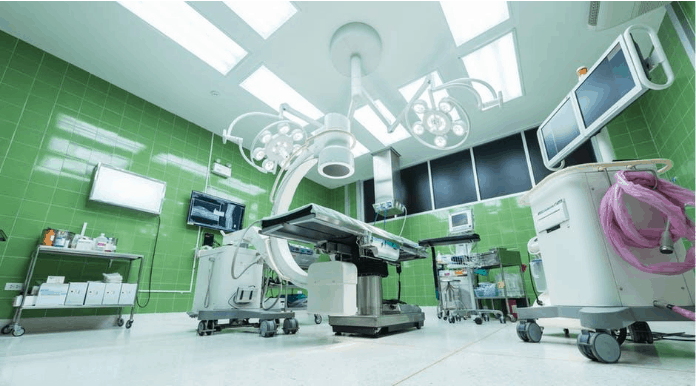When it comes to maintaining a clean, sanitary environment, hospitals are a priority.
If you work at a hospital or work in facilities management, what’s the best way to keep your healthcare facility sanitary and safe?
Read on for some helpful hospital cleaning tips from specialists cleaners to ensure that everyone from patients to staff members is in a sanitary environment at all times.
Avoid Contamination by Using Gloves
It’s no surprise that hospitals are filled with germs and bacteria, which is why using gloves is critical. Whenever you clean, you should wear disposable gloves to avoid touching contaminated surfaces.
Change gloves every time you clean a new room to prevent the spread of germs from one room to another. Any time you handle soiled items like bedsheets, make sure you wear new gloves.
Never wear disposable gloves in hallways or open areas of the hospital. This will help to prevent spreading germs to others. You should always wash your hands after you remove gloves. Dispose of them in a designated location and never throw used gloves in a general use trashcan.
Practice Smart Hospital Cleaning Methods
To ensure your facility stays clean, focus on areas where people touch surfaces most often. Pay close attention to items like bed rails, telephones, doorknobs, and remote controls. Clean these things often and thoroughly.
Keep the most-touched surfaces within the hospital clean on a regular basis every day. This process ensures that all surface germs are eliminated. It also prevents them from spreading from person to person.
You might think that cleaning the dirtiest areas of the hospital first, such as the restrooms, is the way to go. However, you should start cleaning from the cleanest areas first and work your way to the dirty areas.
If you focus on the bathroom or kitchen and then a patient’s room, you increase the risk of spreading germs into those spaces. Always clean the rooms of the healthiest patients first. You may then work your way toward the wards and bathrooms of the sickest patients.
Be Diligent to Avoid Contamination
The possibility of germs and bacteria spreading in a hospital environment is obviously quite high, so you should practice a few simple things to keep contamination at bay. Make sure that biohazards are contained in designated trash bags and receptacles.
Roll dirty bedclothes and sheets away from your body before you put them in the linen bin. This will decrease the potential for germs to get tossed into the air where you and other people can breathe them in.
Tie all trash bags tightly without letting excess air out. Only throw away medical items in their designated areas and never throw needle containers and other biohazard containers into the trash.
The key to a sanitary hospital cleaning procedure is to remain diligent at all times. Make sure you and your staff are aware of the right processes so you can avoid cross-contamination.
Re-train employees on a regular basis so that everyone is aware of proper safety procedures. With some education and communication, everyone who cleans the hospital will know how to work in different areas. They’ll also learn how to stay safe while cleaning.
Restroom and Hospital Room Cleaning Tips
Whether it’s in a patient’s room or in the main lobby, the restroom in a hospital needs special attention. Patients, staff, and visitors use these restrooms, so the odds of contamination are higher than many other types of buildings.
Use quality supplies like a good broom, mop, cleaning clothes, eye protection, and goggles whenever you clean. You can shop our supplies to find a range of products that will keep your facility sanitary.
Always use hospital-grade disinfecting cleaners that are made to kill harmful germs and bacteria. Apply the cleaning solution to every surface of the bathroom including the floors, toilets, and counters. Use glass cleaner for mirrors and place a caution “wet floor” sign in front of the doors after you clean.
Treat doorknobs, handles, and light switches with a disinfectant to minimize the spread of germs. Empty bathroom trash cans regular, and clean the inside if they smell bad or look extremely dirty. Ideally, hospital bathrooms should be cleaned daily to two times per day if there is heavy traffic.
When cleaning patient rooms, be vigilant about protecting yourself and about preventing the spread of germs and bacteria. Always wash your hands and put on protective gloves before you start cleaning.
Strip the patient’s beds and roll the linens away from you, then gently place them in the laundry bin. Never shake or throw used linens as this could cause airborne bacteria to spread.
Spray furniture, lamps, telephones, and bed frames with a quality disinfecting cleaner, then wipe surfaces dry with a clean cloth. Replace all bed linens and window curtains every time an old patient leaves and a new one arrives. Once you’ve cleaned the floors, wash your hands after the cleaning process is complete.
Keeping Hospitals Clean and Safe
When it comes to effective hospital cleaning, follow these tips to keep your facility sanitary and safe. Always follow the directions on cleaning solution products. Wear protective gloves any time you touch or clean a surface.
With good procedures in place, you can be sure that your facility is sanitary while you keep yourself, your staff, and your patients safe.
Visit our website today to read more about the healthcare industry and all the latest news.
The Editorial Team at Healthcare Business Today is made up of skilled healthcare writers and experts, led by our managing editor, Daniel Casciato, who has over 25 years of experience in healthcare writing. Since 1998, we have produced compelling and informative content for numerous publications, establishing ourselves as a trusted resource for health and wellness information. We offer readers access to fresh health, medicine, science, and technology developments and the latest in patient news, emphasizing how these developments affect our lives.








